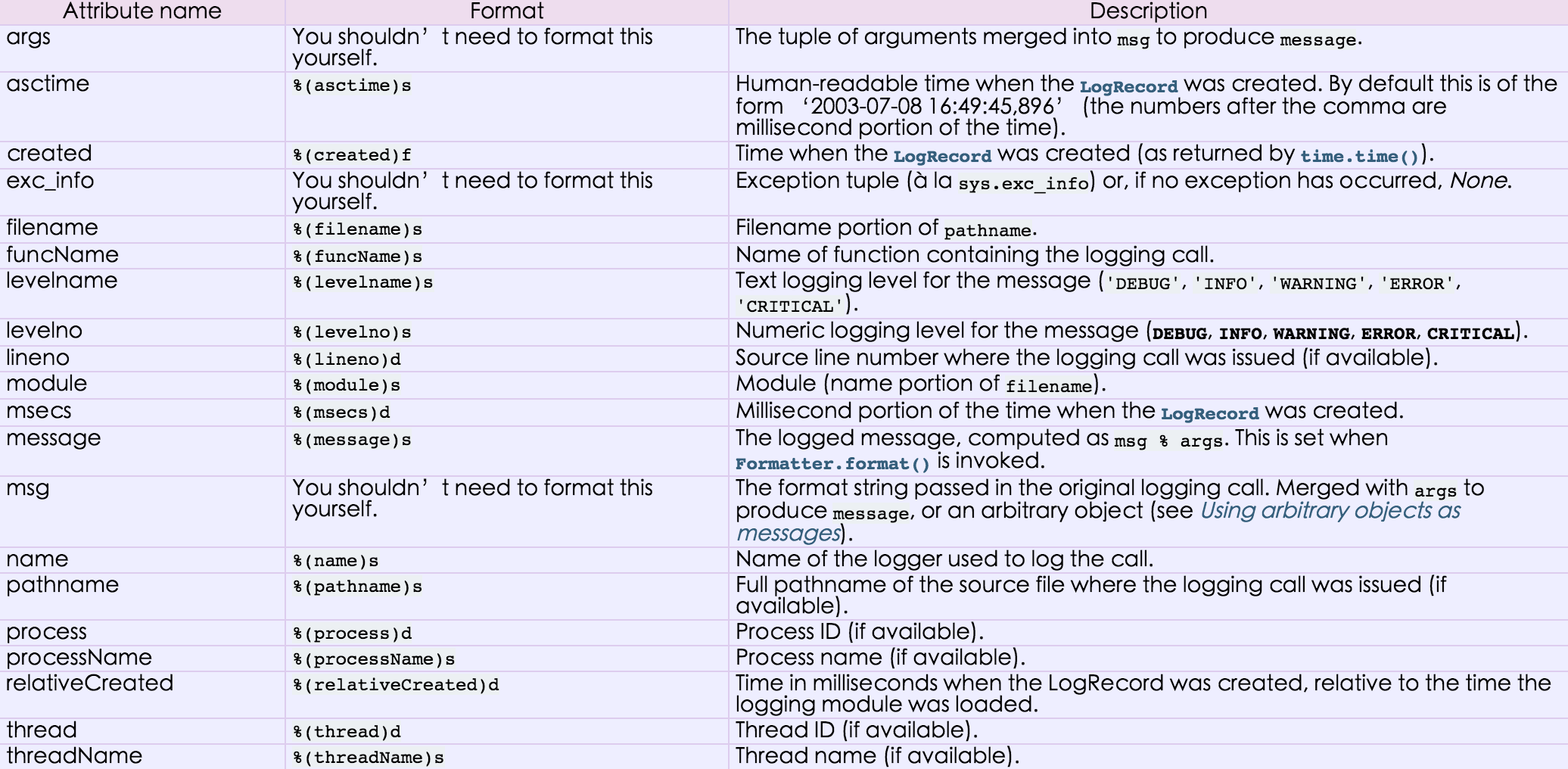python学习笔记-Day6(2)
xml处理模块
xml是实现不同语言或程序之间进行数据交换的协议,跟json差不多,但json使用起来更简单,不过,古时候,在json还没诞生的黑暗年代,大家只能选择用xml呀,至今很多传统公司如金融行业的很多系统的接口还主要是xml。
import xml.etree.ElementTree as ET
tree = ET.parse("country.xml")
root = tree.getroot() # 获得根节点
print(root.tag)
# 遍历xml文档
for child in root:
print(child.tag,child.attrib)
for i in child:
print("-->",i.tag,i.text)
import xml.etree.ElementTree as ET
tree = ET.parse("country.xml")
root = tree.getroot() # get the root node
#只获得year节点
for node in root.iter('year'):
print(node.tag,node.text)
#修改
for node in root.iter('year'):
new_year = int(node.text)+1
node.text = str(new_year)
node.set("updated","yes")
tree.write("xml_test2.xml")
#删除
for country in root.findall("country"):
rank = int(country.find('rank').text)
if rank > 50:
root.remove(country)
tree.write("xml_test2.xml")
#create
new_xml = ET.Element("namelist")#root
name = ET.SubElement(new_xml,"name",attrib={"enrolled":"yes"})
age = ET.SubElement(name,"age",attrib={"checked":"no"})
sex = ET.SubElement(name,"sex")
sex.text = '33'
name2 = ET.SubElement(new_xml,"name",attrib={"enrolled":"no"})
age = ET.SubElement(name2,"age")
age.text = '19' et = ET.ElementTree(new_xml) #生成文档对象
et.write("new_test.xml", encoding="utf-8",xml_declaration=True) ET.dump(new_xml) #打印生成的格式
ConfigParser模块
用于生成和修改常见配置文档
[DEFAULT]
ServerAliveInterval = 45
Compression = yes
CompressionLevel = 9
ForwardX11 = yes [bitbucket.org]
User = hg [topsecret.server.com]
Port = 50022
ForwardX11 = no
对配置文件操作
#生成配置文件
import configparser
config = configparser.ConfigParser()
config.read('example6.ini')
config["DEFAULT"] = {'ServerAliveInterval': '45',
'Compression': 'yes',
'CompressionLevel': '9'} config['bitbucket.org'] = {}
config['bitbucket.org']['User'] = 'hg'
config['topsecret.server.com'] = {}
topsecret = config['topsecret.server.com']
topsecret['Host Port'] = '50022' # mutates the parser
topsecret['ForwardX11'] = 'no' # same here
config['DEFAULT']['ForwardX11'] = 'yes'
with open('example.ini', 'w') as configfile:
config.write(configfile) # 删除指定模块
sec = config.remove_section('bitbucket.org')
config.write(open('example4.ini','w')) #删除模块下的指定项目
config.remove_option('alan','age')
config.write(open('example6.ini','w')) #判断模块名是否存在不存在就创建
sec = config.has_section('alan')
config.add_section('alan')
config['alan']['age']="21"
config.write(open('example6.ini','w')) #改写模块下的指定项目
config.set('alan','age','22')
config.write(open('example6.ini','w'))
hashlib模块
用于加密相关的操作,3.x里代替了md5模块和sha模块,主要提供 SHA1, SHA224, SHA256, SHA384, SHA512
>>> import hashlib
>>> a =hashlib.md5()
>>> a.update(b"Hello")
>>> a.update(b"it's me")
>>> a.digest() #二进制
b'\xc3\xb8Fk,fV\x9c\xd3\x01\x15\xdf\xd3\x9bd\xb8'
>>> a.hexdigest() #16进制
'c3b8466b2c66569cd30115dfd39b64b8'
>>> b = hashlib.sha512()
>>> b.update(b'Hello')
>>> b.digest()
b'6\x15\xf8\x0c\x9d)>\xd7@&\x87\xf9K"\xd5\x8eR\x9b\x8c\xc7\x91o\x8f\xac\x7f\xdd\xf7\xfb\xd5\xafL\xf7w\xd3\xd7\x95\xa7\xa0\n\x16\xbf~\x7f?\xb9V\x1e\xe9\xba\xaeH\r\xa9\xfez\x18v\x9eq\x88k\x03\xf3\x15'
>>> b.hexdigest()
'3615f80c9d293ed7402687f94b22d58e529b8cc7916f8fac7fddf7fbd5af4cf777d3d795a7a00a16bf7e7f3fb9561ee9baae480da9fe7a18769e71886b03f315'
hmac模块
python 还有一个 hmac 模块,它内部对我们创建 key 和 内容 再进行处理然后再加密
>>> import hmac
>>> a=hmac.new(b"secret_key")
>>> a.update(b"Hello")
>>> a.digest()
b'RF\r"\xec~@-\xc8\xc6*\xed\xa5\x1e\xc9 '
>>> a.hexdigest()
'52460d22ec7e402dc8c62aeda51ec920'
Subprocess模块
运行python的时候,我们都是在创建并运行一个进程。像Linux进程那样,一个进程可以fork一个子进程,并让这个子进程exec另外一个程序。在Python中,我们通过标准库中的subprocess包来fork一个子进程,并运行一个外部的程序。
subprocess包中定义有数个创建子进程的函数,这些函数分别以不同的方式创建子进程,所以我们可以根据需要来从中选取一个使用。另外subprocess还提供了一些管理标准流(standard stream)和管道(pipe)的工具,从而在进程间使用文本通信。
>>> subprocess.run(["ls", "-l"]) # doesn't capture output
CompletedProcess(args=['ls', '-l'], returncode=0) >>> subprocess.run("exit 1", shell=True, check=True)
Traceback (most recent call last):
...
subprocess.CalledProcessError: Command 'exit 1' returned non-zero exit status 1 >>> subprocess.run(["ls", "-l", "/dev/null"], stdout=subprocess.PIPE)
CompletedProcess(args=['ls', '-l', '/dev/null'], returncode=0,
stdout=b'crw-rw-rw- 1 root root 1, 3 Jan 23 16:23 /dev/null\n')
调用subprocess.run(...)是推荐的常用方法,在大多数情况下能满足需求,但如果你可能需要进行一些复杂的与系统的交互的话,你还可以用subprocess.Popen(),语法如下:
p = subprocess.Popen("find / -size +1000000 -exec ls -shl {} \;",shell=True,stdout=subprocess.PIPE)
print(p.stdout.read())#显示执行结果
可用参数:
- args:shell命令,可以是字符串或者序列类型(如:list,元组)
- bufsize:指定缓冲。0 无缓冲,1 行缓冲,其他 缓冲区大小,负值 系统缓冲
- stdin, stdout, stderr:分别表示程序的标准输入、输出、错误句柄
- preexec_fn:只在Unix平台下有效,用于指定一个可执行对象(callable object),它将在子进程运行之前被调用
- close_sfs:在windows平台下,如果close_fds被设置为True,则新创建的子进程将不会继承父进程的输入、输出、错误管道。
所以不能将close_fds设置为True同时重定向子进程的标准输入、输出与错误(stdin, stdout, stderr)。 - shell:同上
- cwd:用于设置子进程的当前目录
- env:用于指定子进程的环境变量。如果env = None,子进程的环境变量将从父进程中继承。
- universal_newlines:不同系统的换行符不同,True -> 同意使用 \n
- startupinfo与createionflags只在windows下有效
将被传递给底层的CreateProcess()函数,用于设置子进程的一些属性,如:主窗口的外观,进程的优先级等等
终端输入的命令分为两种:
- 输入即可得到输出,如:ifconfig
- 输入进行某环境,依赖再输入,如:python
交互实例
import subprocess obj = subprocess.Popen(["python"],stdin=subprocess.PIPE,stdout=subprocess.PIPE,stderr=subprocess.PIPE)
obj.stdin.write("print('hello')\n")
obj.stdin.write("print('hello1')\n")
obj.stdin.write("print('hello2')\n")
obj.stdin.write("print('hello3')\n")
out_error_list = obj.communicate()
print(out_error_list)
logging模块
很多程序都有记录日志的需求,并且日志中包含的信息即有正常的程序访问日志,还可能有错误、警告等信息输出,python的logging模块提供了标准的日志接口,你可以通过它存储各种格式的日志,logging的日志可以分为 debug(), info(), warning(), error() and critical() 5个级别
| Level | When it’s used |
|---|---|
DEBUG |
Detailed information, typically of interest only when diagnosing problems. |
INFO |
Confirmation that things are working as expected. |
WARNING |
An indication that something unexpected happened, or indicative of some problem in the near future (e.g. ‘disk space low’). The software is still working as expected. |
ERROR |
Due to a more serious problem, the software has not been able to perform some function. |
CRITICAL |
A serious error, indicating that the program itself may be unable to continue running. |
实例
import logging logging.basicConfig(filename='example2.log',level=logging.ERROR)#创建日志文件并设定级别
logging.debug('This message should go to the log file') #当级别为debug时打印的信息
logging.info('So should this')
logging.warning('And this, too')#除了level设置为error意外的任何一个级别都会打印
格式化输出
import logging
logging.basicConfig(format='%(asctime)s %(message)s', datefmt='%Y-%m-%d %H:%M:%S ')
logging.warning('is when this event was logged.')
输出文件并输出到屏幕
#create logger
logger = logging.getLogger('TEST-LOG')
logger.setLevel(logging.DEBUG)
# create console handler and set level to debug
ch = logging.StreamHandler()
ch.setLevel(logging.DEBUG)
# create file handler and set level to warning
fh = logging.FileHandler("access.log")
fh.setLevel(logging.WARNING)
# create formatter
formatter = logging.Formatter('%(asctime)s - %(name)s - %(levelname)s - %(message)s')
# add formatter to ch and fh
ch.setFormatter(formatter)
fh.setFormatter(formatter)
# add ch and fh to logger
logger.addHandler(ch)
logger.addHandler(fh)
# 'application' code
logger.debug('debug message')
logger.info('info message')
logger.warn('warn message')
logger.error('error message')
logger.critical('critical message')
对于格式,有如下属性可是配置:

用于便捷记录日志且线程安全的模块
mport logging logging.basicConfig(filename='log.log',
format='%(asctime)s - %(name)s - %(levelname)s -%(module)s: %(message)s',
datefmt='%Y-%m-%d %H:%M:%S %p',
level=10) logging.debug('debug')
logging.info('info')
logging.warning('warning')
logging.error('error')
logging.critical('critical')
logging.log(10,'log')
等级:
只有大于当前日志等级的操作才会被记录。
CRITICAL = 50
FATAL = CRITICAL
ERROR = 40
WARNING = 30
WARN = WARNING
INFO = 20
DEBUG = 10
NOTSET = 0
python学习笔记-Day6(2)的更多相关文章
- python学习笔记-Day6(3)
代码书写原则: 1)不能重复写代码 2)写的代码要经常变更 编程模式概述 面向过程:根据业务逻辑从上到下写垒代码 函数式:将某功能代码封装到函数中,日后便无需重复编写,仅调用函数即可 面向对象:对函数 ...
- python学习笔记-Day6(1)
shelve模块是一个简单的k,v将内存数据通过文件持久化的模块,可以持久化任何pickle可支持的python数据格式 >>> s=shelve.open('test') > ...
- Python学习笔记 - day6 - 函数
函数 函数在编程语言中就是完成特定功能的一个词句组(代码块),这组语句可以作为一个单位使用,并且给它取一个名字.可以通过函数名在程序的不同地方多次执行(这叫函数的调用).函数在编程语言中有基本分为:预 ...
- 【目录】Python学习笔记
目录:Python学习笔记 目标:坚持每天学习,每周一篇博文 1. Python学习笔记 - day1 - 概述及安装 2.Python学习笔记 - day2 - PyCharm的基本使用 3.Pyt ...
- Python学习记录day6
title: Python学习记录day6 tags: python author: Chinge Yang date: 2016-12-03 --- Python学习记录day6 @(学习)[pyt ...
- python学习笔记整理——字典
python学习笔记整理 数据结构--字典 无序的 {键:值} 对集合 用于查询的方法 len(d) Return the number of items in the dictionary d. 返 ...
- VS2013中Python学习笔记[Django Web的第一个网页]
前言 前面我简单介绍了Python的Hello World.看到有人问我搞搞Python的Web,一时兴起,就来试试看. 第一篇 VS2013中Python学习笔记[环境搭建] 简单介绍Python环 ...
- python学习笔记之module && package
个人总结: import module,module就是文件名,导入那个python文件 import package,package就是一个文件夹,导入的文件夹下有一个__init__.py的文件, ...
- python学习笔记(六)文件夹遍历,异常处理
python学习笔记(六) 文件夹遍历 1.递归遍历 import os allfile = [] def dirList(path): filelist = os.listdir(path) for ...
随机推荐
- HighCharts使用心得
HighCharts使用心得 前言: 之前很早的一个项目中使用过highcharts,感觉挺方便的,图表类型也比较丰富,而且还支持数据的下钻,但是如果投入商业使用的话还会有一些版权的问题,所以后来就使 ...
- VS问题:该依赖项是由项目系统添加的,不能删除。
该依赖项是由项目系统添加的,不能删除. 原因:是该项目添加对依赖项的引用时,不是直接引用的dll,而是通过“添加引用->项目”的方式引用的项目. 解决:删除“引用”目录下该依赖项的引用,然后通过 ...
- 如何成为一名合格甚至优秀的个人草根站长(转载自ChinaZ)
这章本来不想写来的,后来琢磨琢磨还是废话一下吧.主要是想说下现在草根站长的状态和如何成为一名合格的甚至优秀的草站站长. 伟大的草根站长们,在某些媒体的超级忽悠下全来到网络上淘金来了,有在校的大学生,有 ...
- fastboot 重启到recovery
要使用adb命令,手机需要打开USB debug. 安装软件 adb install apk文件名称.apk 重新安装该软件 adb install -r apk文件名称.apk 卸载apk软件 ad ...
- Web前端图表绘制JQuery插件jqplot
在此之前使用了Chart.js.Highcharts,首先了解一下这两款插件的优势与不足,然后再来了解jqplot. 1.Chart Chart中文官网:http://chartjs.cn/ 1.1优 ...
- 3D数学 ---- 矩阵和线性变换[转载]
http://blog.sina.com.cn/s/blog_536e0eaa0100jn7c.html 一般来说,方阵能描述任意线性变换.线性变换保留了直线和平行线,但原点没有移动.线性变换保留直线 ...
- Redis部分数据结构方法小结
package com.practice.util; import java.util.HashMap; import java.util.List; import java.util.Map; im ...
- Hadoop 2.6 MapReduce运行原理详解
市面上的hadoop权威指南一类的都是老版本的书籍了,索性学习并翻译了下最新版的Hadoop:The Definitive Guide, 4th Edition与大家共同学习. 我们通过提交jar包, ...
- Nuget 管理entity framework
安装,带版本号 PM> Install-Package EntityFramework -Version 5.0.0 更新数据库 PM> Enable-Migrations -Contex ...
- ubuntu下设置clion是使用clang和clang++
链接 http://stackoverflow.com/questions/31725681/how-to-setup-clion-with-portable-clang-on-ubuntu I go ...
